On the bare banks of the Yellow River, deep in the middle of nowhere in Shanxi Province is the tiny hamlet of Qikou.
Qikou was once a bustling trading post on the steep banks of the Yellow River, terraced around a low hill. For more than two centuries, this was the eastern terminus for river-bound freight. The river here narrowed and became shallow, so that boats could no longer pass. The trade goods continued their journey east and north on caravans of horses or camels.
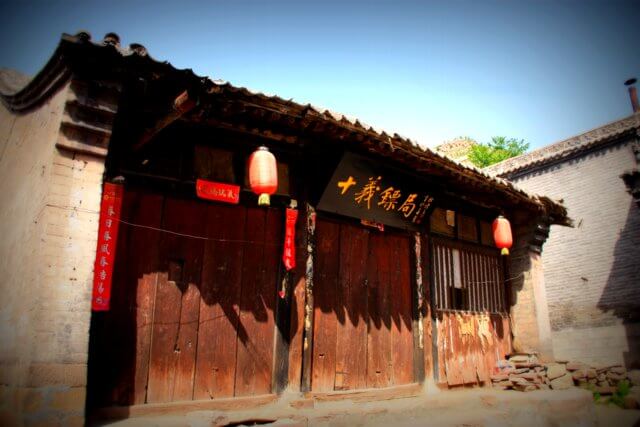
This shop housed the caravan guards - people hired to protect the trade goods on their journey
With the constant flow of merchants, many built houses, stables and trading posts here, but with the construction of the railways in the 1930’s the river traffic ceased and the town fell into decline.
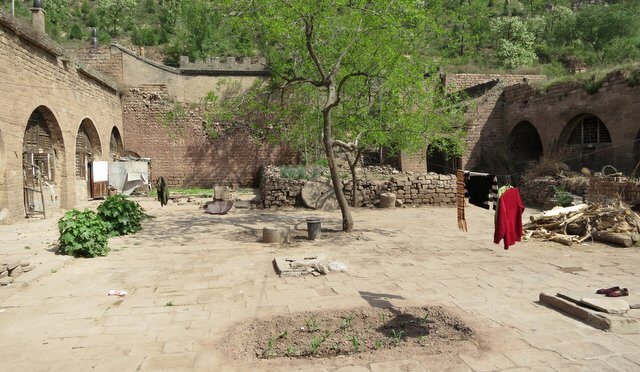
Traditional courtyard home
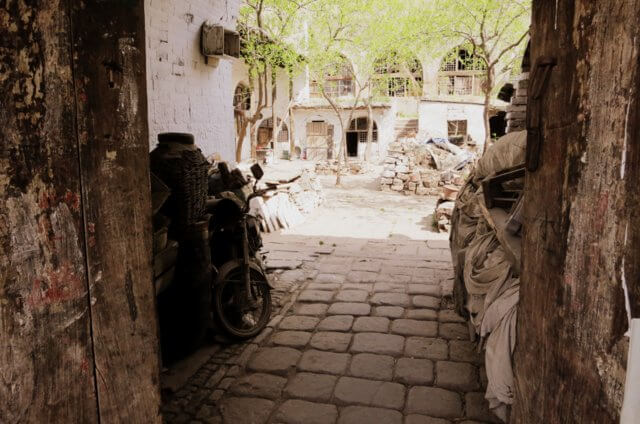
Tianjulong Grain Oil Shop
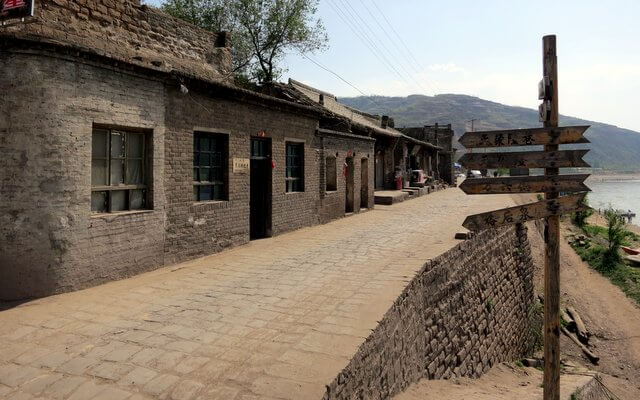
The waterfront, with the 6m high embankment
The village’s main street now runs atop a six-metre high embankment to protect it from the flood prone Yellow River. Thirteen perpendicular lanes serve as paths up to the higher levels of the central hill and serve as channels to funnel floodwaters in the opposite direction.
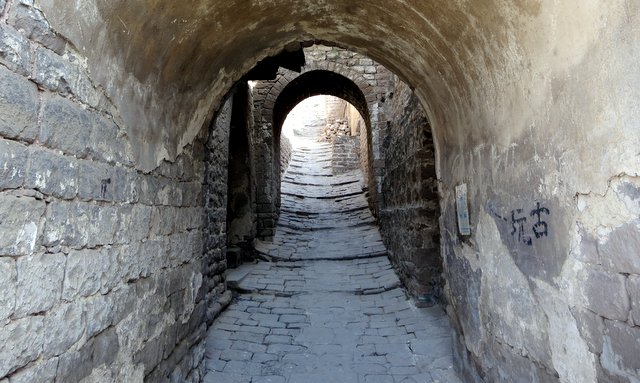
These paths help the water drain down from the hills
On top of the central hill is the typically ornate Black Dragon Temple. Rather than being dedicated to Buddha, this is a temple for local deities. The two chambers house a Black Dragon, who would bring rain to the region, and a statue of a revered local warrior.
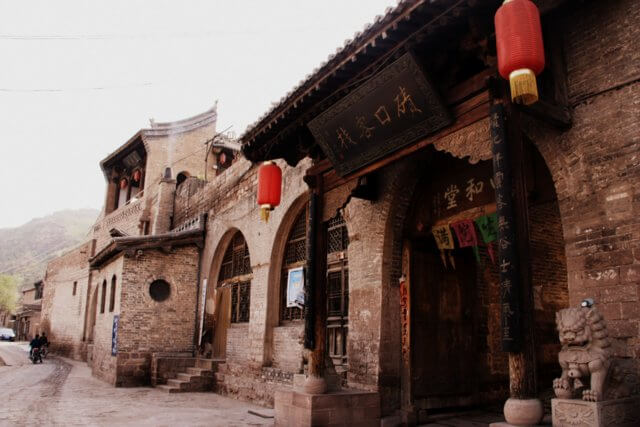
The front of the QiKou Kezhan, or QiKou Inn Hotel
Accommodation
We stayed at the QiKou Kezhan hotel, built an old merchant’s home, which was an impressive castle-like structure overlooking the river. There are also homestays and smaller inns, or it’s possible to go and stay in a cave dwelling over in LiJiaShan.
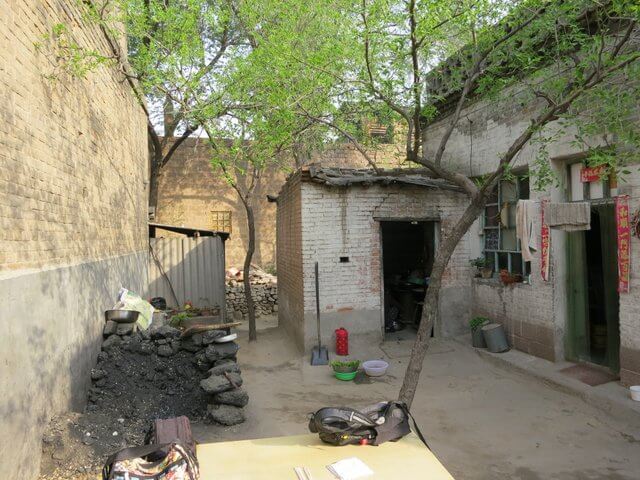
Breakfast Courtyard - notice the huge lumps of Shanxi coal
Food
There’s no polite way of saying it, but almost everything we ate at the hotel and the only restaurant in QiKou was bland. Well made, but completely lacking in herbs, spices or flavour. Still it’s all local and organic, so at least it’s healthy.
As with the rest of Shanxi, the main carb is noodles. Here they’re shaped by hand and are often more like flat pasta discs than the traditional long noodle.
The alternative way to find food is to wander round looking hungry. After asking a couple of elderly ladies where we might find a quick breakfast they dragged us into their courtyard and prepared oregano steamed buns, omelette and a thick broth. At some point she may have called her friends, as foreigners in this town are very rare.
Eventually we were surrounded by an audience of old women smoking, poking, spitting and coughing.
Despite personal space and privacy being respected in ancient China, a lot of those values were lost in the Cultural Revolution. Many things are blamed on the Cultural Revolution, but no-one ever suggests that it could be down to personal responsibility. I’m sure if I put my face three inches from theirs and intently watched them eating, they’d feel somewhat awkward, but they don’t see any problem with doing that to someone else.
Anyway, that breakfast was the best tasting meal we ate in QiKou, if not as quick as we’d intended
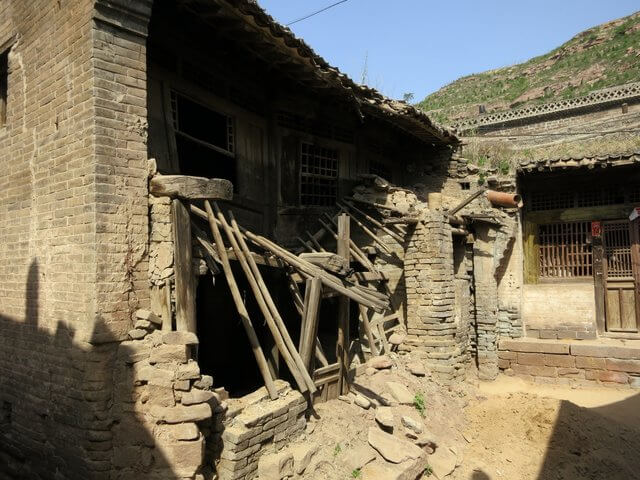
This place had seen better days
When to Visit QiKou?
As soon as possible! Qikouzhen is being completely rebuilt by 2015, so go now. Roads are being dug out along both riverbanks and the village has built up a small domestic tourism industry by having some particularly attractive ancient buildings made from local stone. To capitalise on this architectural tourism they’re pulling all the attractive ancient buildings down and replacing them with mundane brick structures. It doesn’t seem to occur to anyone that tourists may not wish to pay a premium to see a newly built village.
A few people will visit for the interesting nearby LiJiaShan cave dwellings, or the less spectacular Yellow River Rock Paintings, but despite its historical significance, the town isn’t attractive enough to bring people along the 48km of broken highway from Lishi.
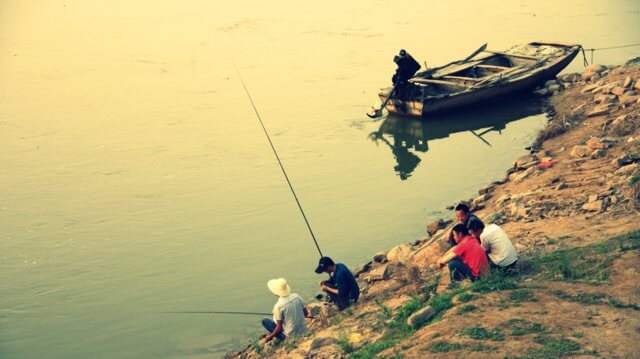
Men fishing in the Yellow River, at the end of the day...
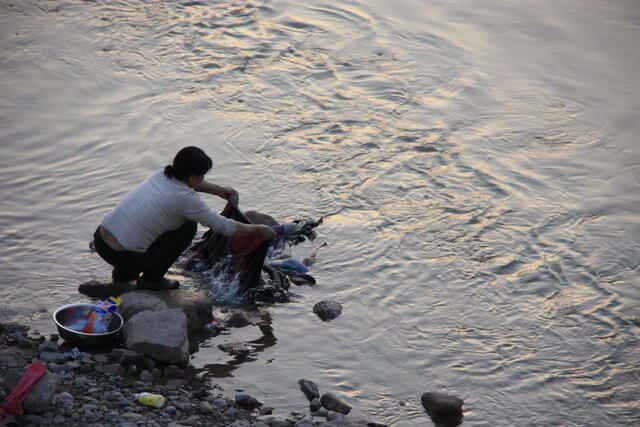
...whilst the ladies do the laundry...
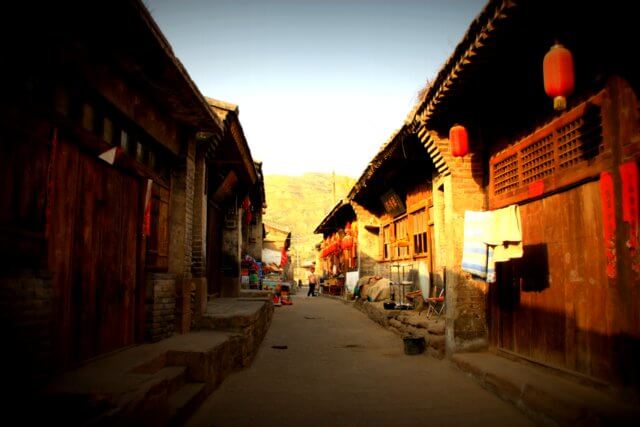






Pingback: (@jkpittman) (@jkpittman)
Pingback: (@BlogExpat) (@BlogExpat)
Pingback: All Things Travel (@Tripsetc)
love these photos, and learning about such a cool place! thanks!
Pingback: Theodora Sutcliffe (@escapeartistes)
What a great find! If only those ancient steps and passageways could talk.
How are you finding these hidden gems? We love visiting places that are out of the usual tourist line of sight and you are doing a great job highlighting them!
That looks amazing. If I had known about that when I lived in China, I might’ve gone to visit. Certainly less touristy than the places I went.
Glad you found this trading post before it’s modern makeover. I love hearing about the kindness of strangers. Too bad you didn’t get a chance to take a picture of the ladies at breakfast.